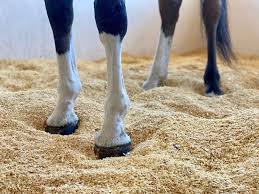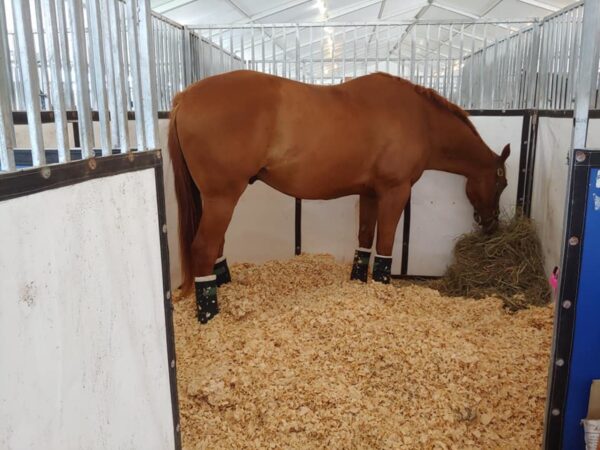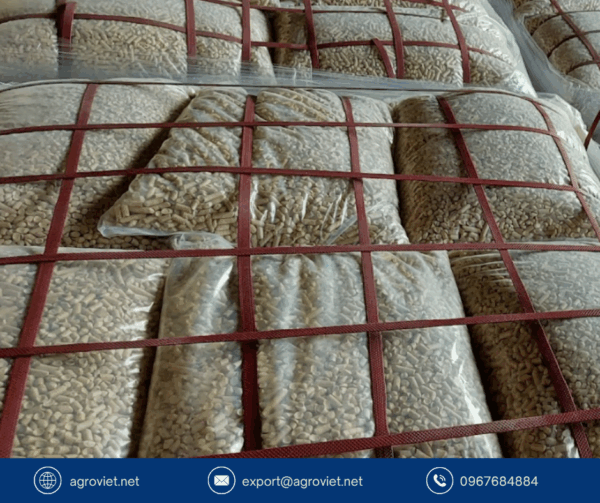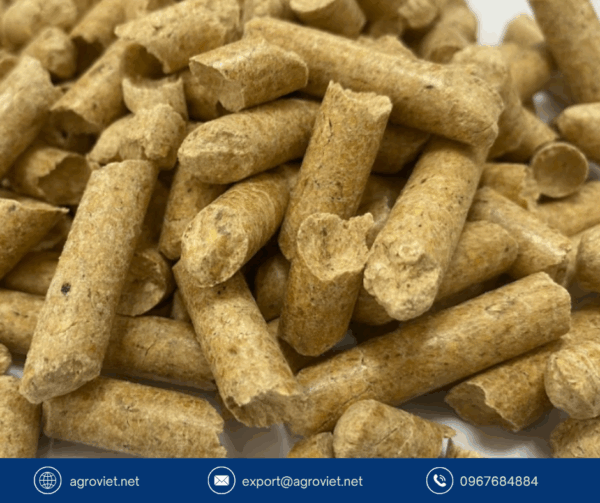Eye Infections in Calves: How Ammonia-Laden Bedding Can Cause Conjunctivitis and Ulcers
Introduction to Eye Infections in Calves
Eye infections, such as conjunctivitis and corneal ulcers, are significant health concerns in calves, leading to discomfort, reduced growth rates, and potential vision loss. Ammonia-laden bedding, often resulting from wet or dirty litter, is a key contributor to these conditions, particularly infectious bovine keratoconjunctivitis (IBK) and bovine iritis. Clean wood pellets, with their superior absorbency and ability to control ammonia, offer an effective solution to prevent these infections. Drawing on veterinary insights from NADIS, this post explores how ammonia from poor bedding causes eye infections in calves and why wood pellets are critical for maintaining a healthy environment.
Understanding Eye Infections in Calves
Eye infections in calves primarily include:
-
Infectious Bovine Keratoconjunctivitis (IBK): Also known as New Forest Eye, IBK is a highly contagious bacterial infection caused by Moraxella bovis. It leads to conjunctivitis, excessive tearing, and corneal ulcers, with severe cases causing temporary blindness or corneal perforation. NADIS reports that IBK affects up to 20% of calves in summer months, costing $50-$150 per case in treatment and reduced performance.
-
Bovine Iritis: Colloquially called “silage eye,” this condition is linked to feeding baled silage or haylage and is often caused by Listeria species. It presents with tear-staining, eyelid closure, and corneal opacity, increasing infection risk in ammonia-heavy environments. Both conditions cause pain, photophobia, and disrupted feeding, leading to weight loss and economic losses.
Read more: https://www.youtube.com/watch?v=rusYeK6QWGY
How Ammonia-Laden Bedding Contributes
Ammonia, produced by bacterial breakdown of urine in wet, soiled bedding, is a potent irritant that exacerbates eye infections. High ammonia levels from poor litter management irritate the conjunctiva, causing inflammation (conjunctivitis) and weakening the cornea, making it susceptible to bacterial invasion. The NADIS source notes that ammonia-laden environments, combined with dust from low-quality bedding, increase IBK incidence by 25%, as flies and dust act as mechanical vectors for Moraxella bovis. Wet bedding also fosters Listeria growth in silage-fed calves, contributing to iritis. Ammonia concentrations above 10 ppm in barns significantly heighten eye irritation and infection risk.
The Role of Poor Bedding To Eye Infections
Poor bedding, such as straw or reused sawdust, retains moisture and manure, creating a breeding ground for bacteria and increasing ammonia production. Wet litter softens the skin around the eyes, allowing pathogens like Moraxella bovis to adhere and infect. Dusty bedding, like fine sawdust, disperses ammonia and bacterial-laden particles, further irritating eyes and facilitating IBK spread. The NADIS study highlights that unhygienic bedding conditions, common in poorly ventilated or infrequently cleaned barns, elevate infection rates, particularly in young stock with immature immune systems.
Health and Economic Impacts
Eye infections cause significant welfare and economic issues:
-
Welfare: Pain from conjunctivitis and ulcers disrupts grazing, leading to reduced feed intake and weight loss. Severe IBK cases cause temporary blindness, increasing risks of injury or misadventure. Iritis causes photophobia, forcing calves to avoid sunlight, further impacting feeding behavior.
-
Economic: Treatment costs, including topical antibiotics or injections, range from $50-$150 per calf. Reduced growth rates and potential culling for severe cases (e.g., corneal perforation) add to losses, with large herds facing annual costs of $10,000-$50,000. Chronic infections also lower future productivity, affecting farm profitability. The NADIS source emphasizes that untreated infections can lead to permanent vision loss, necessitating culling for welfare reasons.
Why Ammonia Is a Key Culprit Of Eye Infections
Ammonia, a volatile gas, irritates the conjunctiva and cornea, causing inflammation and increasing susceptibility to bacterial infections. In wet bedding, Moraxella bovis and Listeria thrive, with ammonia enhancing their pathogenicity by weakening ocular defenses. Dust from poor bedding carries these bacteria, facilitating transmission via flies or direct contact. The NADIS study notes that barns with high ammonia levels (above 10 ppm) and poor ventilation see a 20-30% higher incidence of eye infections, particularly in summer when fly populations peak.
The Importance of Wood Pellets
Clean wood pellets, made from compressed, heat-treated sawdust, are an effective bedding solution for preventing eye infections. They absorb up to five times their weight in moisture, keeping litter dry and reducing ammonia production. The heat-treatment process eliminates pathogens, ensuring a hygienic environment. Unlike straw, which retains moisture, or sawdust, which generates dust, wood pellets create a low-dust, comfortable bedding layer that minimizes eye irritation and bacterial spread. By maintaining litter moisture below 20%, wood pellets significantly reduce the risk of IBK and iritis.
Scientific Evidence Supporting Wood Pellets
The NADIS Veterinary Manual and related research confirm that bedding quality directly impacts eye infection rates. Studies show that highly absorbent bedding, like wood pellets, reduces litter moisture by 40% compared to straw, lowering ammonia levels and Moraxella bovis survival. Their low-dust nature decreases airborne bacterial transmission, with barns using wood pellets reporting a 25% reduction in IBK cases. The ScienceDirect study on poultry bedding supports similar principles, noting that absorbent, hygienic materials reduce pathogen loads, applicable to cattle housing. Wood pellets also promote calf comfort, reducing stress that exacerbates infection susceptibility.
Key Benefits of Wood Pellets for Calf Bedding
-
Ammonia Control: Absorbs moisture, reducing ammonia production and eye irritation.
-
Hygienic Properties: Heat-treated to eliminate pathogens, lowering Moraxella and Listeria risks.
-
Low Dust: Minimizes airborne bacteria and irritants, protecting ocular health.
-
Comfort: Provides a soft, dry surface, encouraging lying time and reducing stress.
-
Cost-Effective: Durable, requiring less frequent replacement than straw or sand.
Consequences of Neglecting Proper Bedding
Using wet, dirty, or dusty bedding increases eye infection risks, leading to severe consequences. IBK and iritis cause pain and vision impairment, reducing feed efficiency and growth by 10-15%. Treatment costs, including antibiotics like oxytetracycline, and potential culling for severe cases escalate expenses, with large farms facing $10,000-$50,000 in annual losses. Chronic infections lead to permanent corneal damage, necessitating removal of the affected eye or culling, as noted by NADIS. Poor bedding also compromises welfare, raising ethical concerns and regulatory scrutiny.
Practical Tips for Using Wood Pellets
To maximize the benefits of wood pellets, farmers should:
-
Source high-quality, untreated wood pellets from reputable suppliers to ensure purity.
-
Spread a 1-2 inch layer and add water to expand into a 4-6 inch bedding base for absorbency.
-
Clean stalls daily, removing soiled pellets and adding fresh ones to maintain hygiene.
-
Store pellets in dry conditions to prevent mold contamination.
-
Ensure 6-8 air changes per hour through ventilation to reduce ammonia and dust.
Complementary Strategies for Eye Infection Prevention
In addition to wood pellets, these practices help prevent eye infections:
-
Fly Control: Use ear tags or pour-on insecticides to reduce Moraxella bovis transmission, though NADIS notes repeated treatments may be needed.
-
Silage Management: Minimize soil contamination in silage to reduce Listeria risk, ensuring proper fermentation and storage.
-
Biosecurity: Quarantine new stock to prevent IBK introduction, as recommended by NADIS.
-
Prompt Treatment: Use topical cloxacillin or conjunctival antibiotic injections for early IBK cases, as per veterinary guidance.
-
Ventilation: Maintain adequate airflow to reduce ammonia and dust accumulation.
Economic and Welfare Impacts
Wood pellets enhance calf welfare by reducing eye infections, ensuring comfort, and minimizing stress-related immune suppression. Healthy calves maintain growth rates, saving farmers $50-$150 per calf in treatment and production losses. The NADIS study highlights that effective bedding management supports herd productivity and reduces culling. Wood pellets’ durability lowers bedding costs, while their biodegradable nature aligns with sustainable farming, meeting consumer demand for ethical livestock care and boosting farm profitability.
Addressing Challenges with Wood Pellets
Challenges include the initial setup time for wetting pellets to expand and sourcing high-quality, dust-free products. Farmers should select premium pellets and store them in dry conditions to prevent mold. Daily stall cleaning prevents compaction, maintaining absorbency. With proper management, wood pellets offer significant advantages in preventing eye infections and supporting calf health.
Conclusion
Ammonia-laden bedding from wet, dirty litter significantly increases the risk of conjunctivitis and corneal ulcers in calves, particularly IBK and bovine iritis, causing pain, vision loss, and economic losses. Clean wood pellets, with their high absorbency, low-dust, and hygienic properties, are a proven solution to reduce ammonia and bacterial contamination. Supported by NADIS, wood pellets maintain a dry, clean environment, lowering infection rates and enhancing welfare. By prioritizing wood pellets and adopting complementary management practices, farmers can protect calf health, reduce costs, and ensure sustainable, profitable livestock operations.
Read more: https://vietnambestwood.com/general/wood-pellets-best-for-green-fields/
